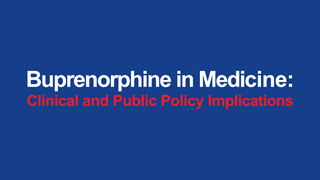Postoperative analgesia after radical prostatectomy with high-dose intrathecal morphine and intravenous naloxone: A retrospective review
DOI:
https://doi.org/10.5055/jom.2009.0033Keywords:
intrathecal morphine, neuraxial opioids, postoperative analgesia, opioid side effects, radical prostatectomy, naloxone infusionAbstract
Background and methods: Intrathecal opioids (ITOs) have been used for decades to control postoperative pain. Intrathecal opioid dosing is limited, however, by opioid-related side effects, most importantly respiratory depression. To overcome these limitations, we combined intrathecal morphine with a continuous intravenous (IV) postoperative naloxone infusion to control opioid-related side effects. The purpose of this study is to document the efficacy and safety of high-dose intrathecal morphine combined with postoperative naloxone infusion to provide postoperative analgesia after major surgery. After IRB approval, a retrospective chart analysis was performed on 35 patients who had a radical prostatectomy from 2004 to 2006. All patients received a single injection of ITOs before anesthesia, a typical general anesthestic, followed by naloxone infusion at 5 μg/kg/h started 1 hour post-ITOs and continued for 22 hours postoperatively. The following information was collected: patient age, height, weight, anesthesia technique/time, and dose of ITOs given. Postoperative pain relief was assessed for 48 hours using the Visual Analog Score (VAS) for pain (0, no pain; 10, worst pain), perioperative opioid use, NSAID consumption, and ability of patient to ambulate. The safety of this novel treatment was assessed with opioid-related side effects and vital signs. All data are reported as mean (SD).Results: Mean ITOs given were morphine 1.3 (0.3) mg combined with fentanyl 56 (9) μg. The intrathecal morphine dose ranged from 0.8 to 1.7 mg. The mean worst pain VAS in the first 12 hours postoperatively was only 1.0 (1.7). The first NSAID dose was given 6.6 (3.1) hours post-ITOs. The first opioid on the floor was given an average of 22.6 (14.5) hours post-ITOs. A mean of only 5.7 (12.3) morphine equivalents were required on postoperative day 1 (POD 1). On POD 2, the mean worst pain VAS was only 2.6 (2.2) with only 5.7 (6.2) morphine equivalents needed to provide pain relief. On POD 1, 25 patients required no additional opioids for their entire hospital stay. Overall, 11 of 35 patients did not require any additional postoperative opioids. Thirtyfour patients (97 percent) were able to ambulate in the first 12 hours postoperatively. No opioid-induced respiratory depression was observed. Opioid-related side effects (pruritus, nausea) were infrequent and minor.
Conclusions: High-dose ITOs combined with postoperative IV naloxone infusion provided excellent analgesia for radical prostate surgery. IV naloxone infusion appeared to control opioid side effects without diminishing the analgesia. No serious adverse effects were noted.
References
Stevens RA, Mikat-Stevens M, Flanigan R, et al.: Does the choice of anesthetic technique affect the recovery of bowel function after radical prostatectomy? Urology. 1998; 52: 213-218.
Meylan N, Elia N, Lysakowski C, et al.: Benefit and risk of intrathecal morphine without local anaesthetic in patients undergoing major surgery: Meta-analysis of randomized trials. Br J Anaesth. 2009; 102: 156-167.
Stoelting RK: Intrathecal morphine: An underused combination for postoperative pain management. Anesth Analg. 1989; 68: 707-709.
Brown D, Hofer R, Patterson D, et al.: Intrathecal anesthesia and recovery from radical prostatectomy. Anesthesiology. 2004; 100: 926-934.
Gwirtz KH, Young JV, Byers RS, et al.: The safety and efficiency of intrathecal opioid analgesia for acute postoperative pain: Seven years’ experience with 5969 patients at Indiana University Hospital. Anesth Analg. 1999; 88: 599-604.
Abouleish E: Apnea associated with the intrathecal administration of morphine in obstetrics. A case report. Br J Anaesth. 1988; 60: 592-594.
Davies GK, Tolhurst-Cleaver CL, James TL: Respiratory depression after intrathecal narcotics. Anesthesia. 1980; 35: 1080-1083.
Glynn CJ, Mather LE, Cousins MJ, et al.: Spinal narcotics and respiratory depression. Lancet. 1981; 2: 356-357.
Horlocker TT, Burton AW, Connis RT, et al.: Practice guidelines for the prevention, detection, and management of respiratory depression associated with neuraxial opioid administration. Anesthesiology. 2009; 110: 218-230.
Rebel A, Sloan PA, Schumacher M: Postoperative analgesia with high-dose intrathecal morphine versus intravenous morphine. Anesth Analg. 2009; 108: S259.
Aldrete JA: The post-anesthesia recovery score revisited. J Clin Anesth. 1995; 7: 89-91.
Hanks GWC, Cherny NI, Fallon M: Opioid analgesic therapy. In Doyle D, Hanks GWC, Cherny NI, Calman K (eds.): Oxford Textbook of Palliative Medicine. Oxford: Oxford University Press, 2004: 316-341.
Jackson KC, Lipmann AG: Opioid analgesics. In Tollison CD (ed.): Practical Pain Management. Philadelphia: Lippincott, Williams & Wilkins, 2001: 224.
Ben-David B, Swanson J, Nelson J, et al.: Multinodal analgesia for radical prostatectomy provides better analgesia and shortens hospital stay. J Clin Anesth. 2007; 19: 264-268.
Wu C, Partin A, Rowlingson A, et al.: Efficacy of continuous local anesthetic infusion for postoperative pain after radical retropubic prostatectomy. Urology. 2005; 66: 366-370.
Gupta A, Fant F, Axelsson K, et al.: Postoperative analgesia after radical retropubic prostatectomy. Anesthesiology. 2006; 105: 784-793.
Katz J, Schmid R, Snijdelaar D, et al.: Pre-emptive analgesia using intravenous Fentanyl plus low-dose ketamine for radical prostatectomy under general anesthesia does not produce short-term or long-term reductions in pain or analgesic use. Pain. 2004; 110: 707-718.
Raffaeli W, Marconi G, Fanelli G, et al.: Opioid-related sideeffects after intrathecal morphine: A prospective, randomized, double-blind dose-response study. Eur J Anaesthesiol. 2006; 23: 605-610.
Dailey PA, Brookshire GL, Shnider SM, et al.: The effects of naloxone associated with the intrathecal use of morphine in labor. Anesth Analg. 1985; 64: 658-666.
Jones RDM, Jones JG: Intrathecal morphine: Naloxone reverses respiratory depression but not analgesia. Br Med J. 1988; 281: 645-646.
Published
How to Cite
Issue
Section
License
Copyright 2005-2024, Weston Medical Publishing, LLC
All Rights Reserved












